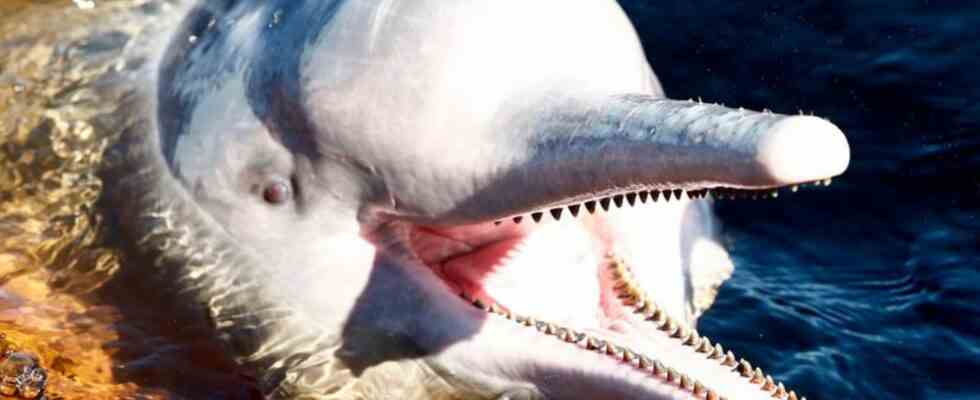environment
Declining animal populations: “Losing our livelihood”
An Amazon river dolphin swims in the Rio Negro near Manaus. photo
© Jeon Heon-Kyun/EPA/dpa
More and more animal populations are disappearing worldwide – and people are to blame. A WWF study now shows how many populations around the world are doing. And warns of a double crisis.
The populations of wild vertebrates have shrunk massively in the past 50 years. Between 1970 and 2018, the more than 31,000 populations studied showed an average decline of 69 percent, writes the environmental foundation WWF and the London Zoological Society in the “Living Planet Report 2022” published on Thursday. In total, data on more than 5200 vertebrate species were evaluated. These include mammals, birds, fish, amphibians and reptiles.
Nature is like a tower in which each building block represents a species of animal or plant, explained Christoph Heinrich, Managing Director of WWF Germany. The more species become extinct, the more unstable it becomes. “We are currently destroying this tower with a jackhammer and are losing our livelihoods with our eyes wide open.”
According to the report, the western lowland gorilla is particularly affected. Its population in a national park in Cameroon shrank by around 69 percent between 2005 and 2019 alone. The Amazon river dolphin population in Brazil declined by around 67 percent from 1994 to 2016. And even if the situation in South America is particularly critical, species native to us are also affected by the development: the population of skylarks in Europe fell by around 56 percent from 1980 to 2019.
Interaction between species extinction and climate crisis
The authors of the report warn of a “fatal interaction” between species extinction and the climate crisis. According to the Intergovernmental Panel on Climate Change (IPCC), the impact of the climate crisis on biodiversity will increase dramatically by 2100. “Conversely, the progressive loss of biological diversity is further fueling the climate crisis.”
This connection can be observed particularly well in the African forest elephant, writes the WWF. Its stocks have already declined by more than 90 percent in some areas. But without the forest elephant, the composition of the forest changes so that it can store significantly less carbon. At the same time, the food supply and thus the health of the animals is in danger as a result of the climate crisis.
The authors of the report called on politicians to implement the climate goals of the Paris Agreement and to expand renewable energies. In addition, poaching and illegal trade in endangered species must be stopped. WWF demanded to stop habitat loss, limit global warming and end the overexploitation of animals and nature.

